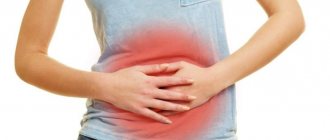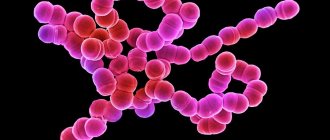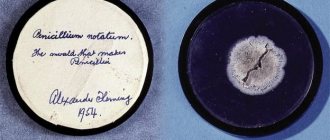| Hypervitaminosis | |
| ICD-10 | 67.067.0-67.367.3 |
| ICD-9 | 278.2278.2, 278.4278.4 |
Hypervitaminosis
is an acute disorder resulting from intoxication with an ultra-high dose of one or more vitamins (contained in food or vitamin-containing preparations).
Most often, hypervitaminosis is caused by taking sharply increased doses of vitamins and.
Treatment is carried out by stopping the intake of vitamins, drinking plenty of fluids (forced diuresis), and antidotes.
WHAT IS HYPERVITAMINOSIS?
From the name it is clear that hypervitaminosis is a condition in which the body receives too many vitamins and it cannot cope with them.
Vitamins are super active substances. They help enhance certain physiological processes, the production, breakdown or absorption of certain substances, proteins, fats and microelements. Some vitamins, such as A and D, are so active that their effects are similar to those of hormones. Therefore, the body requires them in very small quantities. In excess, vitamins can so unbalance all body systems that a long and difficult recovery will be required.
In this case, vitamins are not synthesized in the human body, but come from outside. Without them, all chemical processes will be inhibited. This is what can explain spring lethargy, fatigue, and drowsiness.
Classification
Absolutely all categories of vitamins are divided into two large groups:
- water-soluble - these types include vitamin C and vitamin B complex. In order for signs of such a disease to appear against the background of an overdose of such substances, their injection is necessary. Despite this, hypervitaminosis develops extremely rarely, since the required amount of the drug is absorbed into the blood, and the excess is excreted in the urine;
- fat-soluble - these include vitamins A and D, K and E. They are much more difficult to remove from the body and accumulate in the fatty tissue of some internal organs.
According to the form of the course and the speed of development of symptoms, they are distinguished:
- acute hypervitaminosis - is considered such with short-term consumption, no more than ten weeks, of loading doses of one or another vitamin. For example, an ultra-high dose of vitamin A is considered to be 1,000,000 IU for adults and 500,000 IU for children;
- chronic hypervitaminosis - develops with prolonged use, namely more than six months. In order for a chronic form of vitamin D hypervitaminosis to develop, you need to take 50,000 IU of this substance for a long time.
Sources of vitamin D
HYPERVITAMINOSIS OF VITAMIN C
Vitamin C (ascorbic acid) is necessary for the body to synthesize collagen protein, which in turn is needed by all human connective tissues. Without it, scurvy occurs - a disease in which connective tissues are destroyed (blood vessels, joints suffer, hair and teeth begin to fall out, ulcers appear on the skin). Vitamin C must be supplied to the body daily. It is found in large quantities in citrus fruits, cranberries and sauerkraut.
The peculiarities of hypervitaminosis C are that it occurs only with chronic overdose. That is, for hypervitaminosis to occur, this vitamin needs to gradually accumulate in the body. Its excess leads to intractable chronic diseases: diathesis, allergies and diabetes. At the same time, the lack of this substance is noticeable almost immediately.
Excess Vitamin D
Vitamin D is responsible for calcium-phosphorus metabolism in the body. When there is an excess of it in a person’s blood, an increase in the level of calcium is observed, and in the tissues there is a deposition of calcium in the form of calcifications.
Acute hypervitaminosis D occurs with symptoms of toxic poisoning and dehydration:
- thirst;
- lack of appetite;
- dry skin;
- nausea and vomiting;
- diarrhea alternating with constipation;
- joint pain;
- abnormal heart rhythm;
- sleep disturbance;
- weakness.
Chronic hypervitaminosis D occurs mainly in preschool children and is characterized by children's retardation in physical and psycho-emotional development, disruption of the heart and kidneys, vegetative-vascular dystonia, premature closure of the fontanelles, and decreased immunity. Most often, this pathological condition is provoked by a violation of the dosage of medications with vitamin D.
Symptoms and signs
There are two possible stages of hypervitaminosis:
- The acute form, similar to poisoning, is accompanied by dizziness, nausea, vomiting, and occurs when a single dose of an excess amount of the drug is taken.
- The chronic form manifests itself with long-term use of vitamins and supplements; it can occur in a latent form for a long time and not manifest itself in any way.
General symptoms of hypervitaminosis are as follows:
- yellowish tint of the skin, possible rash and redness;
- abdominal pain that has the nature of cramps;
- headache, nausea, vomiting;
- disturbances in the functioning of the central nervous system, emotional instability, insomnia;
- high blood pressure;
- the appearance of signs of dehydration of the body (dry and flaky skin, hair loss).
To avoid hypervitaminosis, it is necessary to carefully introduce unfamiliar foods into the diet.
Instructions for use routine
Bioflavonoids are powerful antioxidants and capillary protectors, with pharmacological properties comparable to ascorbic acid and tocopherol. They are used to protect cells from free radicals, increase immunity, strengthen blood vessels, and improve the health of the body.
Indications for use:
- hemorrhagic diathesis (hemophilia, Schönlein-Henoch pathology, Werlhof's disease);
- hypo- and avitaminosis P;
- superficial thrombophlebitis;
- haemorrhoids;
- bleeding of various origins (gastrointestinal, nasal, pulmonary, eye);
- hemorrhages accompanying infectious pathologies (scarlet fever, measles, viral infections);
- diseases of the digestive tract (gastric or duodenal ulcers);
- allergic inflammation of the walls of blood vessels (capillary toxicosis);
- radiation sickness;
- glomerulonephritis with hemorrhagic syndrome;
- collagenoses;
- skin diseases (wetting eczema, dermatitis, hemosiderosis, toxic erythema);
- rheumatism;
- diseases of the biliary organs;
- damage to capillaries due to the use of salicylates, anticoagulants and arsenic-containing agents;
- Quincke's edema;
- lymphostasis;
- venous insufficiency of the lower extremities;
- septic endocarditis;
- glomerulonephritis;
- hypertonic disease;
- thrombocytopenic purpura;
- phlebeurysm.
Considering the ability of flavonoids to bind inflammatory mediators (histamine and serotonin), which provoke the appearance of pain and tissue swelling, vitamin P in combination with ascorbic acid is prescribed for allergies, bronchial asthma, hay fever, and allergic food reactions.
Instructions for the use of bioflavonoid agents
Vitamin P (tablets, capsules, dragees, powder, granules) is taken orally after meals, dividing the daily dose into 2–3 doses.
The body's daily requirement for vitamin P is:
- for infants and infants up to 2 years – 5 – 10 milligrams;
- for children from 3 to 5 years old – 10 – 15 milligrams;
- for schoolchildren from 6 to 8 years old – 15 – 20 milligrams;
- for adolescents from 9 to 14 years old – 20 – 40 milligrams;
- for adults – 40 – 100 milligrams.
The average therapeutic dosage of the substance is 150 milligrams per day. However, in case of chronic venous insufficiency, diabetic retinopathy, dermatological reactions to radiation therapy, the daily portion of the substance can be increased to 1200 milligrams (under medical supervision).
Contraindications: first trimester of pregnancy, individual intolerance to the substance.
Remember, in some cases, the absorption of flavonoids is slow and asymptomatic. Therefore, if there is a need to take large doses of the substance (1000 milligrams), the effect of the compound is enhanced with organic vitamin C (in equal proportions) and tocopherol. Let's consider the factors that provoke the occurrence of P deficiency.
Treatment
Elimination of such a disease in adults and children is often conservative, but individual. The scheme of how to treat hypervitaminosis will be dictated by the substance with which the overdose occurred. However, there are several general points of therapy:
- discontinuation of medications and refusal to consume foods that contain this or that vitamin;
- intravenous fluid administration - to eliminate dehydration from persistent vomiting or profuse diarrhea;
- taking hormonal medications to reduce the toxic effects of vitamins;
- abundant drinking regime.
The issue of surgical intervention is decided on an individual basis, and the main indication for this is a serious disruption of the functioning of any internal organ.
Similar diseases
It is also important to understand what vitamin deficiency and hypervitaminosis are and to understand similar diseases. Unlike the disease that our article is devoted to, vitamin deficiency is a disease that is caused by a lack of one or more vitamins entering our body.
This disease, as a rule, is a consequence of poor nutrition, in the absence of nutrients and minerals. This is what vitamin deficiency and hypervitaminosis are.
It is worth noting that there are several other painful conditions, the causes of which are also associated with a lack or excess of vitamins. It is necessary to distinguish between hypovitaminosis and hypervitaminosis. If we already know everything about the latter, then the former is a consequence of insufficient intake of certain vitamins into our body compared to their intensive consumption. The difference from vitamin deficiency is that this condition is considered painful only if the consumption of a certain substance becomes too high. In another situation, the vitamins entering the body could be enough for normal life. Vitamin deficiency is a more serious disease. These are the features of hypo and hypervitaminosis.
The most dangerous thing is that hypovitaminosis develops completely unnoticed. A person's fatigue increases, irritability appears, appetite disappears and attention decreases. All these symptoms are often attributed to stress, without giving them much importance. In the future, this condition threatens a significant decrease in performance and may affect the functioning of certain internal organs, physical and intellectual capabilities, the functioning of the body’s defenses, and the reproductive system. In advanced cases, it leads to destruction of the immune system, type 2 diabetes, and cancer.
Avitaminosis, hypovitaminosis, hypervitaminosis are diseases in one way or another related to the amount of vitamins in our body. The level of consumption of these beneficial substances should be closely monitored, only in this case it will be possible to avoid serious health problems.
Diagnostics
The diagnosis of hypervitaminosis is confirmed based on biochemical and clinical indicators of laboratory tests. Nevertheless, in diagnosis, the initial examination, which is carried out personally by a clinician, namely a gastroenterologist, is very important.
Thus, primary diagnosis includes:
- studying the patient’s life history - this will indicate which vitamin caused the intoxication of the body;
- a thorough physical examination, during which the condition of the skin, nails and hair is necessarily examined, as well as temperature and heart rate measurements;
- a detailed survey of the patient or his parents - for the clinician to compile a general picture of the manifestation of signs of hypervitaminosis.
The following laboratory studies will also help to recognize the type of hypervitaminosis:
- general clinical blood test;
- hormonal tests;
- general urine analysis.
Instrumental diagnostic measures are necessary in order to confirm or refute the presence of a dysfunction of a particular internal organ, as well as to assess the condition of the bones. Such information can be obtained using:
- X-rays of bones;
- Ultrasound of the abdominal cavity;
- CT and MRI;
- biopsies;
- endoscopic procedures.
Carrying out radiography
Safety rules and possible complications
If treatment is not started in time, complications may arise:
- kidney failure;
- pulmonary edema;
- numbness of the limbs;
- diabetes;
- infertility or pathologies during pregnancy, miscarriage.
If you decide to take vitamins and supplements without first consulting a doctor, remember that it is easier for the body to tolerate vitamin deficiency or hypovitaminosis than to exceed the concentration of these compounds.
To avoid the consequences of an overdose, be sure to take breaks between taking vitamin complexes. In the summer, adjust your diet and try to get nutrients from vegetables and fruits.
In addition, think over a menu in which natural products will predominate. Give preference to fresh herbs, vegetables and fruits, cereals and dairy products.
How to prevent hypervitaminosis D?
Stop or reduce doses of vitamin D. The maximum daily dose of vitamin D should be set at 4000 IU per day.
Eating foods rich in vitamin D, including:
- fish fat;
- fatty fish (salmon and tuna);
- beef liver;
- cheese;
- egg yolks;
- some mushrooms;
- You can find foods fortified with vitamin D, including milk, orange juice and yogurt. Moderate exposure to sunlight is another source of natural vitamin D.
Interaction between flavonoid extract and other substances
On the threshold of the discovery of vitamin factors, component P was removed from the list of essential compounds, since, according to scientists, the nutrient was not one of the essential substances for the human body. However, modern research suggests the opposite, especially in supporting capillary resistance, regulating enzyme synthesis and cellular protection against free radicals.
Let's consider the influence and compatibility of vitamin P on the concentration of other substances.
- Quercetin increases the bioavailability of succinic acid, L-carnitine and polyunsaturated fatty acids (omega 3).
- Vitamin P is destroyed by exposure to oxygen, sunlight and excess heat.
- Alcohol and nicotine reduce the concentration of flavonoids in the body by 3 times.
- Rutin weakens the pharmacological properties of vitamin B1.
- The drug Ascorutin, due to the content of ascorbic acid, enhances the absorption of iron and penicillins, reduces the therapeutic effect of anticoagulants.
- Vitamin P enhances the therapeutic properties of zinc and selenium.
- The bioflavonoids concentrate prevents the oxidation of ascorbic acid, enhancing its pharmacological properties tenfold.
- Vitamin P accelerates the absorption of beta-carotene in the intestines.
- Under the influence of antibiotics, salicylates, glucocorticosteroids and sulfonamides, the flavonoid concentrate is not absorbed.
- Group P substances prevent the development of complications when taking anticoagulants (Syncumar, warfarin).
- Vitamin P, when interacting with carbohydrates, forms complex compounds - glycosides, which protect the body from the adverse effects of the external environment.
- Bioflavonoids combine with each other and organic acids.
Remember, freezing and cooking fresh foods reduces the concentration of vitamin compounds in food by 90%.
Rutin for hemorrhoids
In proctology, vitamin P is used to strengthen the walls of blood vessels and capillaries of the venous “network” of the rectum. In the treatment of hemorrhoids, ascorutin or rutin preparations in combination with organic vitamin C (calcium ascorbate) are most often used. The combined use of ascorbic acid and bioflavonoids leads to a decrease in swelling and bleeding in the cavernous tissue, and an improvement in blood microcirculation in the venous network of the rectum. At the same time, rutoside (glycoside of the flavonoid quercetin) strengthens the venous wall of hemorrhoids, suppresses inflammatory processes in them, reduces capillary permeability, prevents thrombus formation, and vitamin C is involved in the formation of collagen in cells, the synthesis of proteins and lipids, redox reactions, metabolism carbohydrates.
The complex effect of substances on the capillaries of the rectum is the key to successful elimination of hemorrhoidal bleeding and prevention of their recurrence in the future.
In addition, vitamin P helps eliminate pain and swelling that occur during exacerbation of pathology. For hemorrhoids, rutin is used at all stages of the disease, regardless of the external or internal location of the node.
During “bioflavonoid” therapy, nausea and headache sometimes occur, which disappear after 5-7 days.
Vitamin P, as part of ascorutin, is prescribed in a dosage of 50 milligrams (1 tablet) 2 - 3 times a day. Duration of treatment – 3 – 4 weeks.
Drugs in this group are used with caution for thrombophlebitis and thrombosis.
Advice for specific disease conditions
When treating an excess of vitamin A, you should start by eliminating vitamin complexes and reducing the intake of this substance in the body along with food.
If the doctor was able to diagnose acute poisoning, infusion solutions are administered intravenously to the patient. For example, a 0.9% sodium chloride solution, which will help remove excess vitamin from the body as quickly as possible. Lock-Ringer solution along with diuretics also helps for this purpose.
In most cases, it will be justified to prescribe vitamin C, which is considered a retinol inhibitor, effectively reducing its content in the body.
As a rule, with timely treatment and following all doctor’s recommendations, symptoms disappear within a maximum of two weeks.
Chemical properties
Bioflavonoids, due to the characteristics of the crystal lattice, are classified as phenolic compounds of the C6 – C3 – C6 series. A characteristic feature of these substances is the presence in the structure of benzene rings, which are connected to each other by a three-carbon fragment. At the same time, nutrients differ in the degree of oxidation of propane units, the position and number of hydroxyl groups in the aromatic nuclei. In nature, flavonoids are most often found with four or five hydroxyls per molecule, less often - with one, two or six.
The following substances have a specific feature of increasing vascular resistance: flavonones, catechins, chalcones, flavones, leukoanthocyanins, isoflavones, dihydrochalcones, flavonols, anthocyanins.
Compounds of group P are yellow, orange and yellow-green crystals, most of which are soluble in water, insoluble in chloroform, benzene, and ethyl ether. A distinctive feature of rutin and quercetin is their high melting point. The indicator of the first substance is 180 - 190 degrees, the second - 316 - 317. These substances are difficult to dissolve in boiling water and alcohol, and are practically insoluble in cold water. With aqueous solutions of alkalis, rutin and quercetin form homogeneous mixtures.
When FeCl3 concentrate (1%) interacts with flavonoids in ethanol, the compounds acquire a dark color, namely: in reactions to catechins - a bright crimson hue (when adding a 1% vanillin solution to hydrochloric acid), to hesperedin - orange-red (when reduced magnesium), for flavonols - an intense yellow tone (when mixing an aqueous concentrate of alkali metal hydroxides or ammonia water).
Let's consider why vitamin P is needed, who is suitable for “bioflavonoid therapy”, signs of hypovitaminosis, instructions for use, food sources of the nutrient.
Vitamin P in nature
Bioflavonoids are found in plant organelles: leaves, roots, flowers, fruits, wood and cell sap (in dissolved form). The largest amount of vitamin P is concentrated in the pulp and peel of citrus fruits and rose-flowering crops, which gives them a rich burgundy and purple color (cherry, blueberry, plum).
In the fruits of some plants, flavonoids are concentrated mainly in the skin (apples, cucumbers, pears).
Moreover, each product contains an exceptional composition of flavonoids. For example, beets contain betaine and betanin, blueberries contain anthocyanins, citrus fruits contain flavones and flavonones, and tea (green) contains catechins. Table No. 1 “Which products contain flavonoid extract”
| Product name | Content of flavonoids in 100 grams of products, milligrams |
| Chokeberry | 3000 |
| Cherry | 2300 |
| Honeysuckle | 1300 |
| Rosehip (fruit) | 1000 |
| Lemon, orange | 500 |
| Sorrel | 450 |
| Grape | 430 |
| Barberry | 400 |
| Nectarine, peach | 350 |
| bell pepper | 300 |
| Blueberry | 300 |
| Gooseberry, eshta | 300 |
| Strawberries | 300 |
| Strawberry | 250 |
| Cowberry | 250 |
| Raspberries | 250 |
| Black currant | 240 |
| Red Ribes | 210 |
| Quince | 205 |
| White cabbage | 160 |
| Cauliflower | 140 |
| Potatoes (young) | 100 |
| Lettuce, spinach | 90 |
| Plum | 90 |
| Cherries | 85 |
| Apple | 80 |
| Tomato | 60 |
| Soya beans | 56 |
| Pine nut | 48 |
| Hazelnut | 40 |
| Sesame (cereal) | 34 |
Decoctions of herbs replenish vitamin P reserves well: horsetail, hawthorn, tea leaf, knotweed, licorice, immortelle, tansy, motherwort, hibiscus (hibiscus). At the same time, the concentration of flavonoids in a cup of drink ranges from 40 to 400 milligrams, depending on the type of raw material and the method of steaming.











